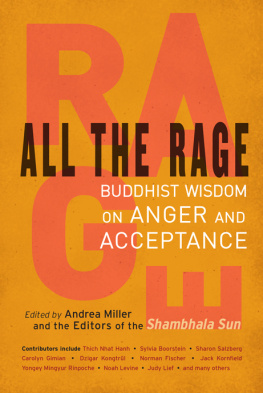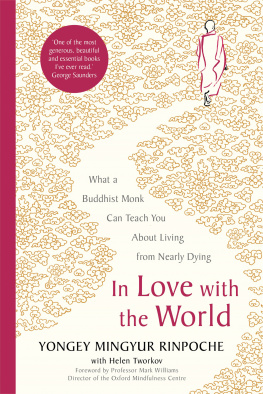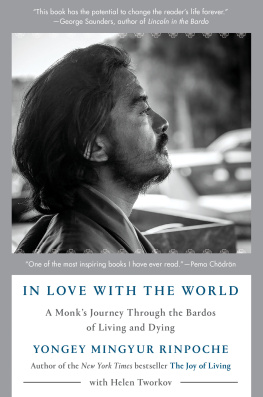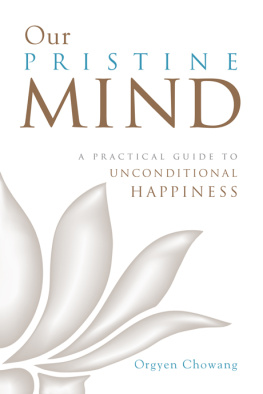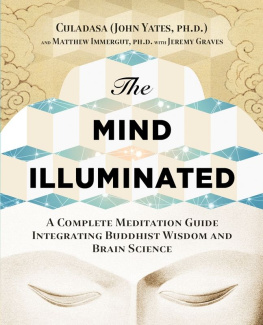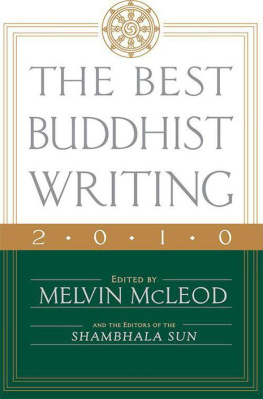
CONTENTS
FOREWORD
WE ARE WITNESSING an unparalleled episode in the history of science: a serious, ongoing two-way conversation between scientists and contemplatives. From the scientific perspective, some of this encounter has been sobering. My own branch of science, psychology, had always assumed that its roots were to be found in Europe and America around the start of the twentieth century. That view turns out to be both culture-bound and historically shortsighted: Theories of the mind and its workingsthat is, psychological systemshave been developed within most of the great world religions, all from Asia.
Back in the 1970s, traveling in India as a graduate student, I found myself studying Abhidharma, one of the more elegant examples of such an ancient psychology from Buddhism. I was stunned to discover that the basic questions of a science of mind had been explored for millennia, not just a mere century. Clinical psychology, my own field at the time, sought to help alleviate the varieties of emotional pain. But, to my surprise, I found that this millennia-old system articulated a set of methods not just for healing mental suffering, but also for expanding such positive human capacities as compassion and empathy. Yet I had never heard of this psychology anywhere in my own studies.
Today the vigorous dialogue between practitioners of this ancient inner science and modern scientists has blossomed into active collaboration. This working partnership has been catalyzed by the Dalai Lama and the Mind and Life Institute, which for several years has brought together Buddhists and scholars in discussions with modern scientists. What began as exploratory conversations has evolved into a joint research effort. As a result, experts in Buddhist mind science have been working with neuroscientists to design research that will document the neural impact of these varieties of mental training. Yongey Mingyur Rinpoche has been one of the expert practitioners most actively involved in this alliance, working with Richard Davidson, the director of the Waisman Laboratory for Brain Imaging and Behavior at the University of Wisconsin. This research has yielded stunning results, which if replicated will alter forever certain basic scientific assumptionsfor example, that systematic training in meditation, when sustained steadily over years, can enhance the human capacity for positive changes in brain activity to an extent undreamed of in modern cognitive neuroscience.
Perhaps the most staggering result to date came in a study of a handful of meditation adepts that included Yongey Mingyur Rinpoche (as he describes in this book). During a meditation on compassion, neural activity in a key center in the brains system for happiness jumped by 700 to 800 percent! For ordinary subjects in the study, volunteers who had just begun to meditate, that same area increased its activity by a mere 10 to 15 percent. These meditation experts had put in levels of practice typical of Olympic athletesbetween ten thousand and fifty-five thousand hours over the course of a lifetimehoning their meditative skills during years of retreat. Yongey Mingyur is something of a prodigy here. As a young boy, he received profound meditation instructions from his father, Tulku Urgyen Rinpoche, one of the most renowned masters to have come out of Tibet, just before the Communist invasion. When he was only thirteen, Yongey Mingyur was inspired to begin a three-year-long meditation retreat. And when he had finished, he was made meditation master of the very next three-year retreat at that hermitage.
Yongey Mingyur is unusual, too, in his keen interest in modern science. He has been an ardent spectator at several of the Mind and Life meetings, and has seized every opportunity to meet one-on-one with scientists who could explain more about their specialties. Many of these conversations have revealed remarkable similarities between key points in Buddhism and modern scientific understandingnot just in psychology, but also with cosmological principles stemming from recent advances in quantum theory. The essence of those conversations is shared in this book.
But these more esoteric points are woven into a larger narrative, a more pragmatic introduction to the basic meditation practices Yongey Mingyur teaches so accessibly. This is, after all, a practical guide, a handbook for transforming life for the better. And that journey begins from wherever we happen to find ourselves, as we take the first step.
D ANIEL G OLEMAN
INTRODUCTION
THIS BOOK BEGAN life as a relatively simple assignment of splicing together transcripts of Yongey Mingyur Rinpoches early public lectures at Buddhist centers around the world and editing the whole into a somewhat logically structured manuscript. (It should be noted that Rinpochewhich may be roughly translated from the Tibetan as precious oneis a title appended to the name of a great master, similar to the way the title Ph.D. is appended to the name of a person deemed expert in various branches of Western study. According to Tibetan tradition, a master granted the title of Rinpoche is often addressed or referred to by the title alone.)
As is often the case, however, simple tasks tend to assume lives of their own, growing beyond their initial scope into much larger projects. Since most of the transcripts Id received had been drawn from Yongey Mingyurs early years of teaching, they didnt reflect the detailed understanding of modern science he had acquired through his later discussions with European and North American scientists, his participation in the Mind and Life Institute conferences, and his personal experience as a research subject at the Waisman Laboratory for Brain Imaging and Behavior at the University of Wisconsin, Madison.
Fortunately, an opportunity to work directly with Yongey Mingyur on the manuscript opened up when he took a break from his worldwide teaching schedule for an extended stay in Nepal during the closing months of 2004. I must admit that I was inspired more by dread than by excitement over the prospect of spending several months in a country beset by conflict between government and insurgent factions. But whatever inconveniences I experienced during my stay there were more than offset by the extraordinary chance to spend an hour or two every day in the company of one of the most charismatic, intelligent, and knowledgeable teachers I have ever had the privilege of knowing.
Born in 1975 in Nubri, Nepal, Yongey Mingyur Rinpoche is a rising star among the new generation of Tibetan Buddhist masters trained outside of Tibet. Deeply versed in the practical and philosophical disciplines of an ancient tradition, he is also amazingly conversant in the issues and details of modern culture, having taught for nearly a decade around the world, meeting and speaking with a diverse array of individuals ranging from internationally renowned scientists to suburbanites trying to resolve petty feuds with angry neighbors.
I suspect that the ease with which Rinpoche is able to navigate the complex and sometimes emotionally charged situations he encounters during his worldwide teaching tours stems in part from having been groomed from an early age for the rigors of public life. At the age of three, he was formally recognized by the Sixteenth Karmapa (one of the most highly esteemed Tibetan Buddhist masters of the twentieth century) as the seventh incarnation of Yongey Mingyur Rinpoche, a meditation adept and scholar of the seventeenth century who was noted in particular as a master of advanced methods of Buddhist practice. At about the same time, Dilgo Khyentse Rinpoche informed Rinpoches parents that their son was also the incarnation of Kyabje Kangyur Rinpoche, a meditation master of immense practical geniuswho, as one of the first of the great Tibetan masters to voluntarily accept exile from his homeland in the wake of the political changes that began to shake Tibet in the 1950s, commanded until his death an enormous audience of both Eastern and Western students.
Next page


